You are probably wondering what’s so amazing about a starfish. It typically just stays in one place. What’s the big deal? Well, in this article we will get an understanding as to why some scientists have said ‘Starfish have been called the strangest animal on Earth…they are built like nothing else on the planet”!!! As we shall see, there are two aspects of the Starfish that NO OTHER creator on earth has and there are a few other aspects that while a very few other creatures have them, nevertheless, they are still quite unique and we will discuss them.
Because of the unique structures of the starfish, to do justice to the topic, we will need more pictures than usual. (Scientists have changed its name to Sea Star since it’s not a fish since it has no fins.)
I think we should start with it’s pretty unique (there are 4 other creatures that have a similar system) water vascular system. Sea stars basically have no blood. It mostly exists in seawater, and it lives off seawater. (They do not live in freshwater rivers, only in seawater.) The 2 pictures below will be explained after the pictures.
Picture A

Picture B
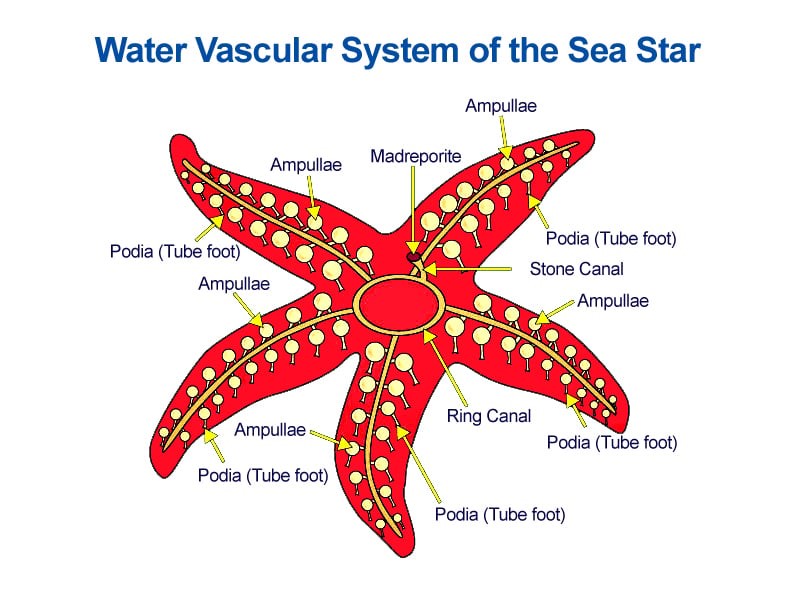
These two pictures will explain a lot. In picture B – the white center is the madreporite. It’s where it all starts off. It’s a tube covered by a sieve-like material where the seawater enters to start the process. The sieve of course keeps out dirt etc. The other things around the madreporite will be explained later on. In picture A the water then goes down into what’s called the stone canal. It’s made of hard calcium type of material; hence it’s called the stone canal. (It’s not that easy to see it in the picture since it’s a relatively short pipe.) From the stone canal, the water continues into the ring canal. From the ring canal the water continues to go to through the 5 arms (rays) through what’s called the radial canal. The radial canal is a pipe that carries the water across the full length of the arm. Attached all across the length of the radial canals are what’s called lateral canals. (Not shown in picture A but you can see it in picture C) Picture a capital T. The radial canal is the long part of the T and the lateral canals are like the top of the T going out the right and left side of the radial canal. They are 2 very thin tubes and they carry the water to the all-important ampulla. The ampulla are the top part of the tube feet. Picture C is a picture of what we just described.
Picture C

The below pictures are pictures of the top and bottom of the ampulla. The bottom part of the ampulla is the podia, otherwise known as the tube foot. The blue line being shown is the radial canal carrying the water to the ampulla, but it’s missing the thin hard to see, lateral canals that are really the last piece of the puzzle that carries the water from the radial canals to the ampulla and then to the tube foot. The lateral canals are extremely important since they each have a valve in them that holds the water in the ampulla from going back into the radial canal. If there was no valve then there wouldn’t be any vacuum and suction capabilities between the ampulla and the feet. This suction process is called Hydraulics. Hydraulics is a mechanical function that operates through the force of liquid pressure. In hydraulics-based systems, mechanical movement is produced by contained, pumped liquid, just like we have here in the forcing of liquid into the tube feet through the pressure exerted from the ampulla bulb/sac which compresses the water downwards into the tube foot. It works as follows.
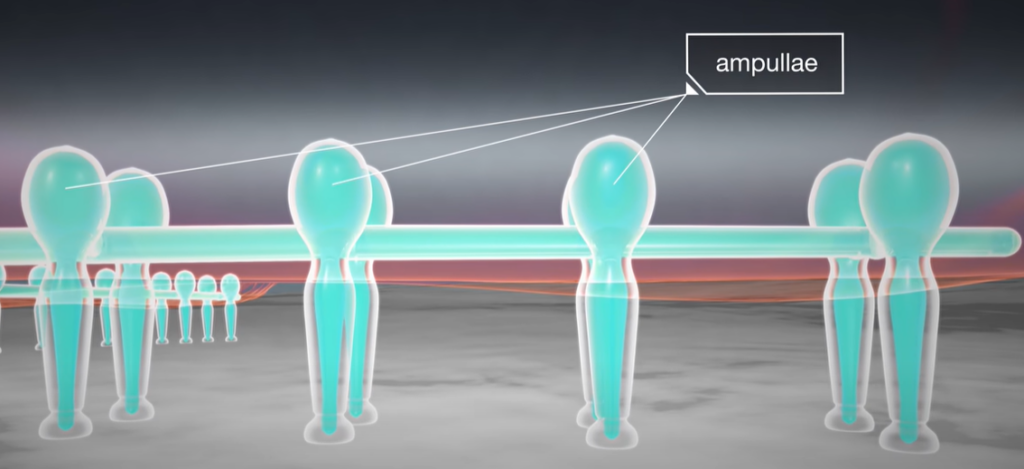
Picture of water going down the madreporite through the ring canal and then through the radial canal (through the lateral canals – not seen) down into the ampulla and into the tube feet.
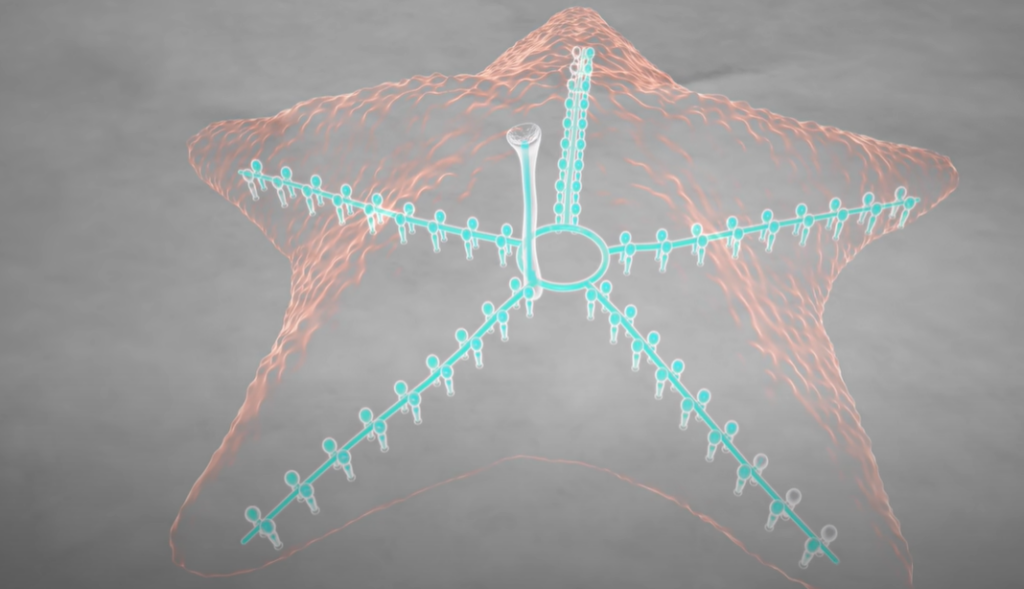
Tube feet
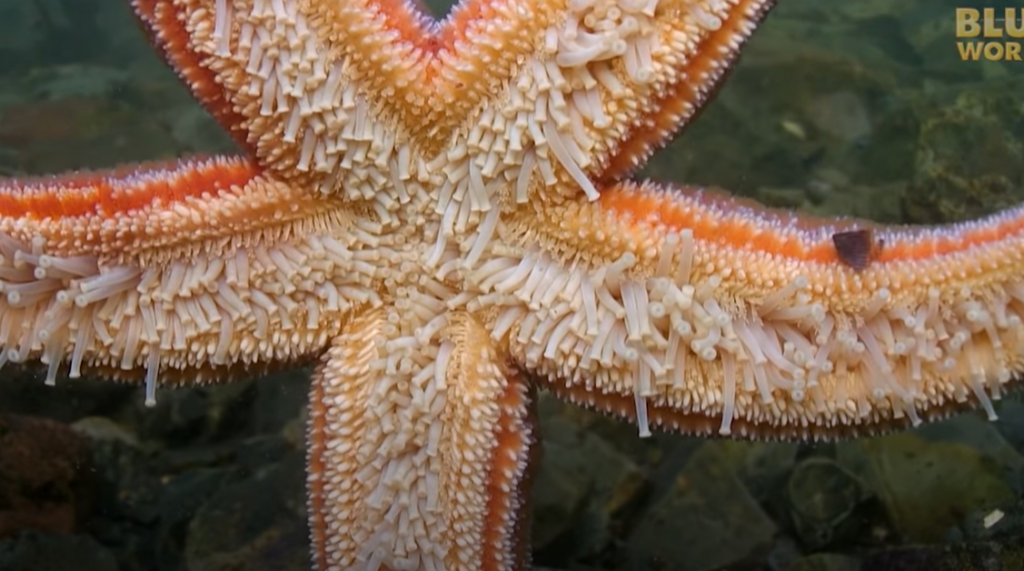
It works as follows. The podium (foot) is stretched to full length by the contraction (squeezing) of the circumferential muscles in the ampulla bulb which is full of water. This action generates pressure that sends out the water from the ampulla, into the podium (foot). It works similar to the way a dropper works. (See the left picture in the box with (f) in it.) Then relaxation of the ampullar muscles, together with the contraction of the podium’s longitudinal muscles, and together with the contractor muscles, causes the podium to retract (to become skinnier) and it thereby sends the water back up from the podium into the ampulla. This takes place when the feet are ready to go back into its body cavity when it wants to stop walking. The feet retreat into the cavity on the bottom of the arms. It also takes place to a lesser degree whenever any step is taken. When the foot needs to move forwards there’s also a little amount of the tube foot retracting. The longitudinal muscles are also the cause of the bending of the feet in whichever direction it needs to bend in order to follow the leading arm.
The below picture depicts how the activation of ampulla muscles and the podia lead to contraction, extension and the bending of the tube feet. The below picture shows how the tube feet aren’t simple structures at all. They have various muscles working in them as we just explained.

The feet release their grasp of the ground when they reach a certain length that is preprogrammed into their nerves. If the foot would be extended too long it would rip. Now, what grasp of the ground are we talking about? Well, amazingly enough, there’s two ways how the end of the tube feet grab onto surfaces it’s walking on. One is with the levator muscles (see below picture) which causes a curvature in the bottom of the foot thereby creating a suction from the sucker part of the foot. But there’s another amazing way it holds on tight to surfaces. Amazingly, it has glands towards the bottom of their foot that uses special chemicals to create 2 different types of adhesive liquids, that when they are released, they create a strong bond to the surface it’s walking on. In fact, it’s so strong that it immediately needs another chemical to be released to enable detaching from the chemical bond just created, so that the foot is released and it can move forward! (You could see the chemical footprints they leave over when they pick up their feet!)

HOWEVER, there’s one little problem. I didn’t mention this until now, but the starfish has no brain! Yes. You read that correctly! Therefore, scientists have no idea how the hundreds and thousands of feet can all walk in such synchronization, and coordination without a brain. You must realize that there’s one arm that leads the way. Usually, it’s the arm that detected the scent of potential food. Now if you see the way the feet are setup, each arm must have their feet facing a different direction that the other feet since they are all on a different angle to each other. What amazing coordination it takes to have all the feet going in the same direction, all without a brain! There’s MUCH MUCH MORE to discuss about the amazing starfish which IY”H we will get to in the next article or two.
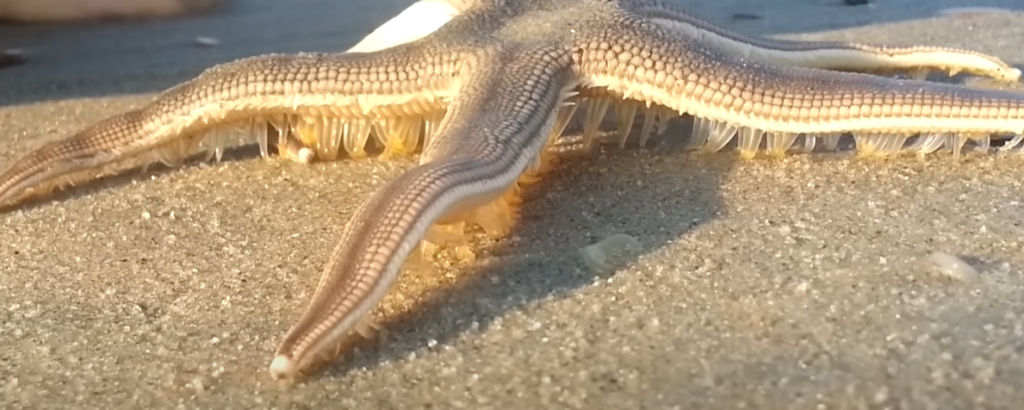
About the Author
Rabbi Shmuel Waldman, a prominent figure in religious education for over five decades, has been profoundly influenced by the teachings of Rabbi Avigdor Miller ZTL. At 17, he began listening to Rabbi Miller’s lectures and later formed a strong relationship with Rav Don Segal, shlit”a, Mashgiach of Mirrer Yeshiva. Rabbi Waldman spent years at Mirrer Yeshiva Kollel before becoming the Mashgiach of Yeshiva Mercaz Hatorah of Belle Harbor, where he guided high school students through lectures and one-on-one mentorship. His acclaimed book, Beyond A Reasonable Doubt: Convincing Evidence to the Truths of Judaism, has become a cornerstone in the field of kiruv, selling tens of thousands of copies. Rabbi Waldman has also left a lasting impact on students at Yeshiva Tiferes Moshe and through his teaching in summer camps. He is currently completing a major Sefer on the significance of proper prayer in Orthodox Judaism. Recently, Rabbi Waldman launched a blog that explores Intelligent Design and critiques the Theory of Evolution, in addition to running a YouTube channel dedicated to religious education.